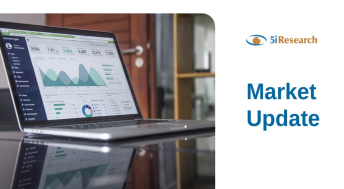Before we start, we do struggle to talk about markets and finances in times like this when lives and lifestyles hang in the balance and just want to acknowledge that we do not and never intend to undermine the severity of what is going on right now outside of financial markets. On that note, we also hope everyone is staying safe and healthy, as we all get through this together.
This has been fast and painful for investors across the world and the fear is palpable but at some point, investors and the markets will begin looking past the current concerns and see the light at the end of the tunnel. Of course, the important question is how close are we to the bottom? While we nor anyone can time the bottom perfectly, we can look at history for lessons:
Currently, the SPX and TSX are down by roughly 26% and 29% since their recent highs, respectively. Looking back to the 1920s (for the S&P 500) there have been 12 bear markets (defined as a 20% decline from highs) before this current one with an average decline in the 42% range (and 35% if we count the first two far steeper bear markets as outliers). So, while there might be a bit more pain and there is likely to be more negative headlines coming our way, when we look at the data that we have to go on, we think we are closer to being on the tail end of this selloff than the beginning. This, of course, does not mean that volatility will settle down anytime soon but at this stage we think markets have had time to better understand and price in a lot of the scenarios that can play out due to recent events.
What does a 42% or 35% decline look like from highs for the S&P 500? The 52-week high was 3,393 in Late February 2020. From those levels, a 42% decline would imply a level of 1,968 and a 35% decline would be 2,205. From levels we are today (~2,386) as we write this, this implies a 17.5% to 7.5% further decline. As noted earlier, we would tend to opt to exclude some of the earlier crises in 1929 and 1937 with declines in the 60% and 86% range simply because we think economies have evolved a lot since then and central banks and governments have (hopefully) learned a lot as well. Already, it looks like most institutions are more or less prepared to pull out all of the stops to support economies if they are not already and more safety nets exist than way in the past. So, we do not think taking the ‘optimistic’ scenario on bear markets is unreasonable here.
Trying to keep our optimistic hats on, it also seems more and more like governments are taking aggressive but necessary efforts to contain the virus as much as possible. Businesses and the economy will still see significant impacts but dealing with the problems quickly and aggressively should mean that things are contained and start improving sooner rather than later. The sooner markets can be reassured that the spread is being controlled, we think the sooner markets will start thinking a bit more into the future than what the next one or two quarters will look like and the sooner life, in general, can get back to normal.
If we go back to 1990, the average trailing P/E ratio for the S&P 500 is 19.9. Currently, the P/E ratio is 19.3. Over the last five years, the P/E ratio has averaged 21.5. Looking at forward P/E ratios, the S&P 500 has averaged 15.8 and is currently sitting at 17.6.
For the TSX since 1990, the long-term average trailing P/E is 18.1 and the current market P/E is 11. We do note, however, that the TSX is a bit tougher to get a gauge on due to the turbulence in the energy sector. A lot of the P/E ratio will be weighed down by low prices in energy names that are currently cutting dividends and have question marks around solvency in some cases. Regardless, valuations have not looked this attractive for some time (notwithstanding staring down a crisis currently).
Overall, looking at the numbers, it is hard to not think we are getting closer to the end of this from a market perspective. Of course, in times like this, fear and ‘irrational’ behaviour mean markets can do much worse in the short term. This is where time frames are so important. You might not time things perfectly and markets certainly could go down another 20% (choose your number) on pure panic/fear-based trading. However, the lower markets go and the more fear that overtakes them, the more confident we think investors can be that things will work out ‘ok’ over a longer timeframe.
What is the playbook at this point? There is no right answer unless you have the benefit of hindsight. We do view the data as aligning in a way that investors who start to pick away at investments will be rewarded. With most of North America being put into some form of isolation for at least the next two weeks, we think over that timeframe markets will have a far better idea of what things are going to look like. So, for those looking for a bit more certainty or clarity, we think waiting another one or two weeks can make sense before making any large portfolio decisions (if any).
In the meantime, stay diversified, think long-term and stay healthy.
If you are not yet a member of 5i Research, we encourage you try our services and if it is not what you are looking for, take advantage of our 60-day money-back guarantee.





Comments
Login to post a comment.
Thanks Peter and team
GUY
Tom
Hope the government doesn’t run out of “our” money